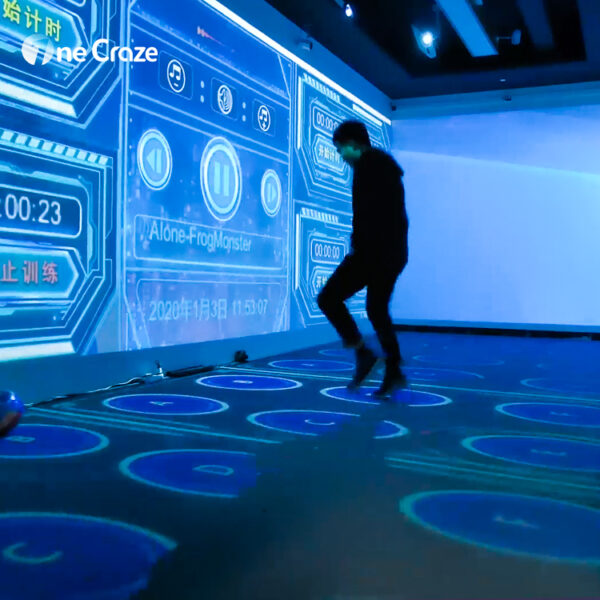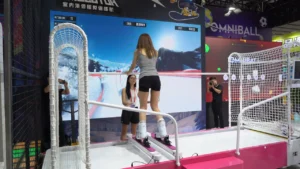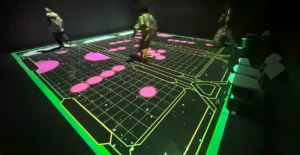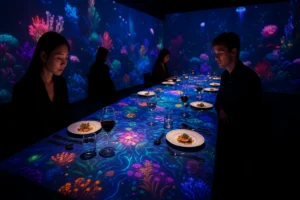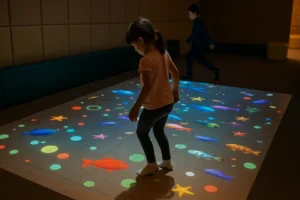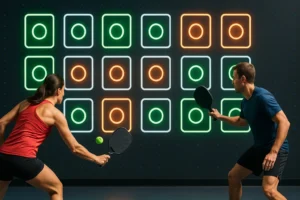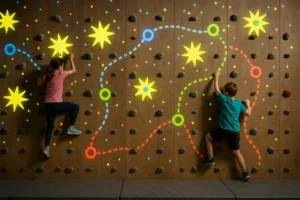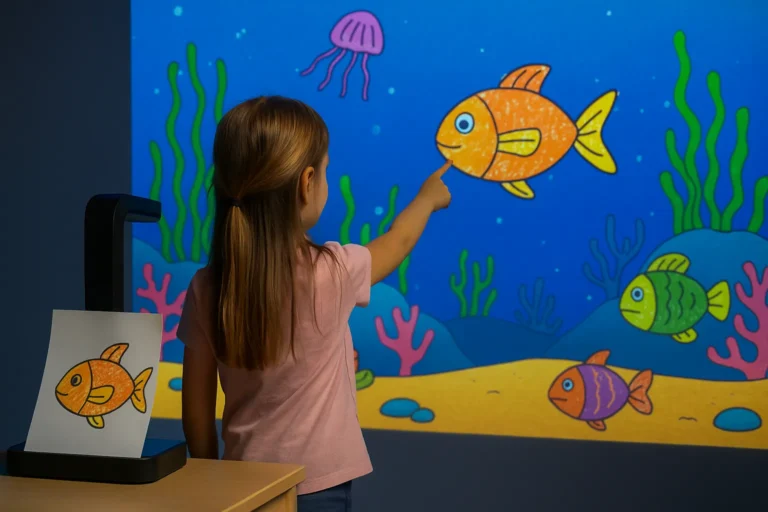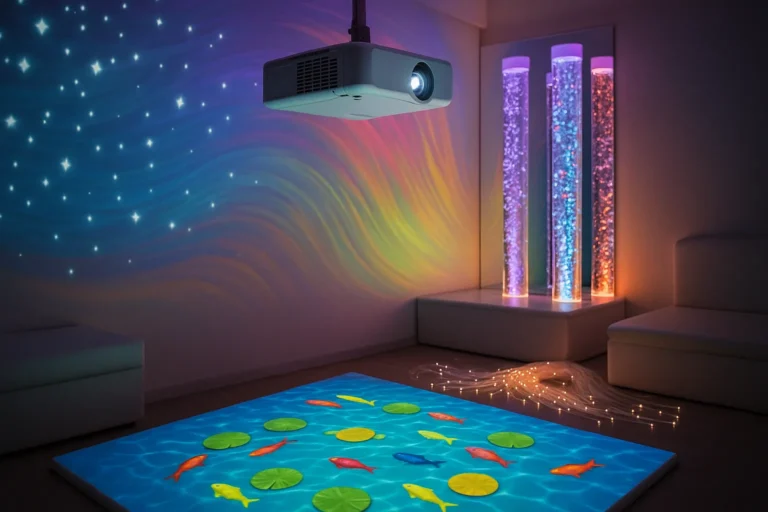In recent years, the entertainment and edutainment industries have undergone a digital transformation, especially with the rise of interactive projector games. Among the most innovative developments are interactive multiplayer projector games that integrate sensory floor and wall touch experiences. These immersive solutions are not only visually impressive but also highly engaging across a variety of venues like restaurants, children’s learning centers, fitness clubs, and experience stores.
What Exactly Is an Interactive Multiplayer Projector Games System? 🧩
An interactive multiplayer projector games system combines motion sensors, real-time projection, and multi-touch input to transform any ordinary floor or wall into a dynamic, touch-responsive playground.
✨ Key Components Include:
- Advanced projector systems for high-resolution imagery.
- Multi-point touch recognition sensors for simultaneous user interaction.
- Specialized software that adapts content in real-time.
- A control unit or panel for customization and management.
This system is especially popular in environments where multisensory engagement is critical, including early childhood education centers and family-friendly restaurants.
How Do Sensory Floors and Wall Touch Games Enhance the Experience? 🌈
The inclusion of sensory floors and interactive wall projector games elevates user participation by involving both visual and tactile senses. These game systems allow children and adults alike to jump, touch, wave, or dance to control the game—providing not just entertainment, but also physical and cognitive stimulation.
📌 Top Benefits:
- Encourages team-based play and social interaction.
- Supports motor skill development in younger users.
- Provides inclusive experiences for people with disabilities.
- Easily adaptable for branded or educational content.
Where Are These Systems Being Used? 🏢
One of the hottest trends in restaurant mapping and guest engagement is integrating interactive projection technology. This creates a memorable and immersive ambiance for visitors while waiting or dining.
🌟 Common Installations:
- Theme restaurants with gamified dining tables.
- Museums and exhibits that invite guests to “step into the story”.
- Indoor playgrounds and arcades offering physical challenges.
- Fitness centers for gamified workouts.
If you’re a company looking to differentiate your venue, working with the right maker, software supplier, or hardware manufacturer can ensure smooth implementation and operational efficiency.
How Much Does It Cost? Price Factors Explained 💸
One of the most frequent questions from potential buyers is, “How much does an interactive projector game cost?” The answer varies depending on system complexity, size, customization, and installation support.
💰 Main Pricing Factors:
- Hardware quality (HD vs 4K projectors, touch panel sensitivity).
- Size and number of interactive zones.
- Type of software and games included.
- Custom branding or content requirements.
- Installation, warranty, and support services.
Customization & Software: Tailoring the Hottest Experiences 🧠
The real magic lies in the software. Leading providers offer access to game libraries that can be:
- 🧒 Child-focused (math, colors, animals)
- 💼 Business-specific (branding, gamified marketing)
- ⚽ Movement-based (sports, races, dance games)
Furthermore, the interactive projector games can be updated remotely, allowing you to rotate content or integrate new modules as user trends evolve. For restaurants, custom-designed mapping games can enhance theme dining or showcase seasonal promotions interactively.
Yes, these systems are designed with child safety in mind, using non-radiative sensors and soft visual elements.
Absolutely. Many providers offer branded content or even user-generated templates that reflect your brand identity.
Delivery time depends on the supplier or manufacturer, but typically ranges from 2 to 6 weeks depending on system complexity and region.


